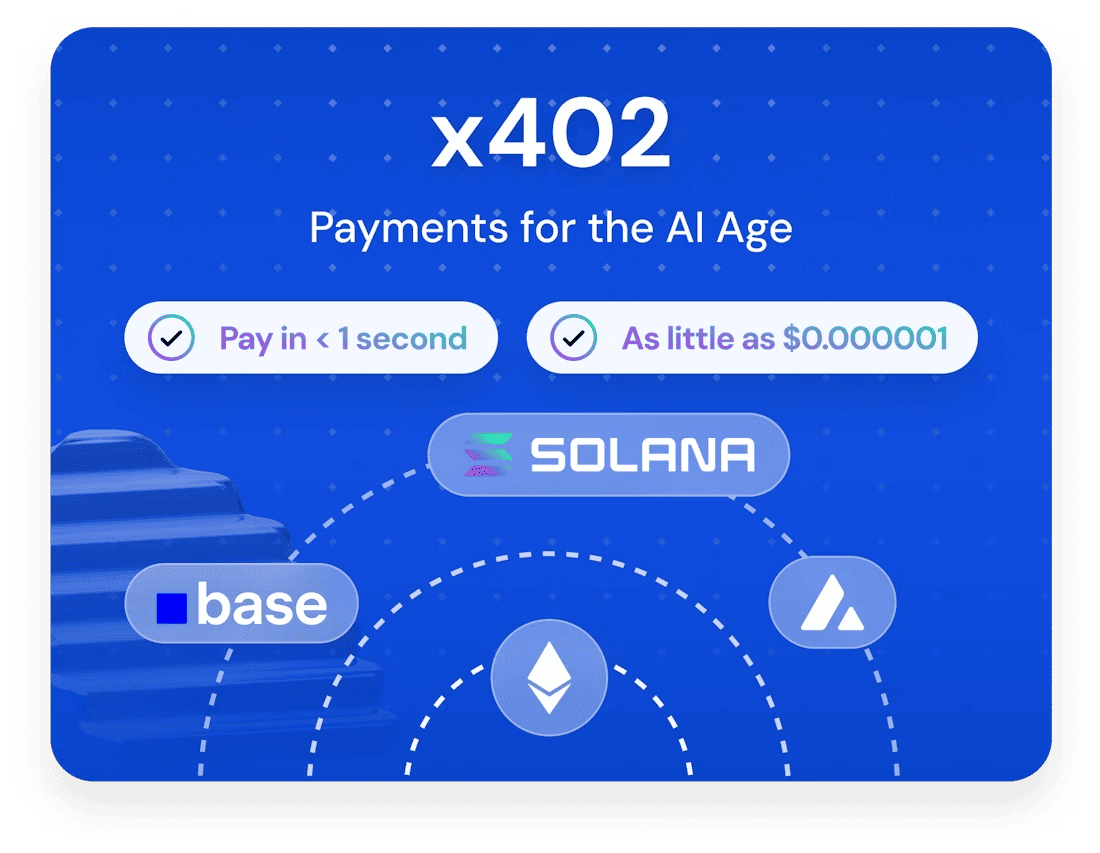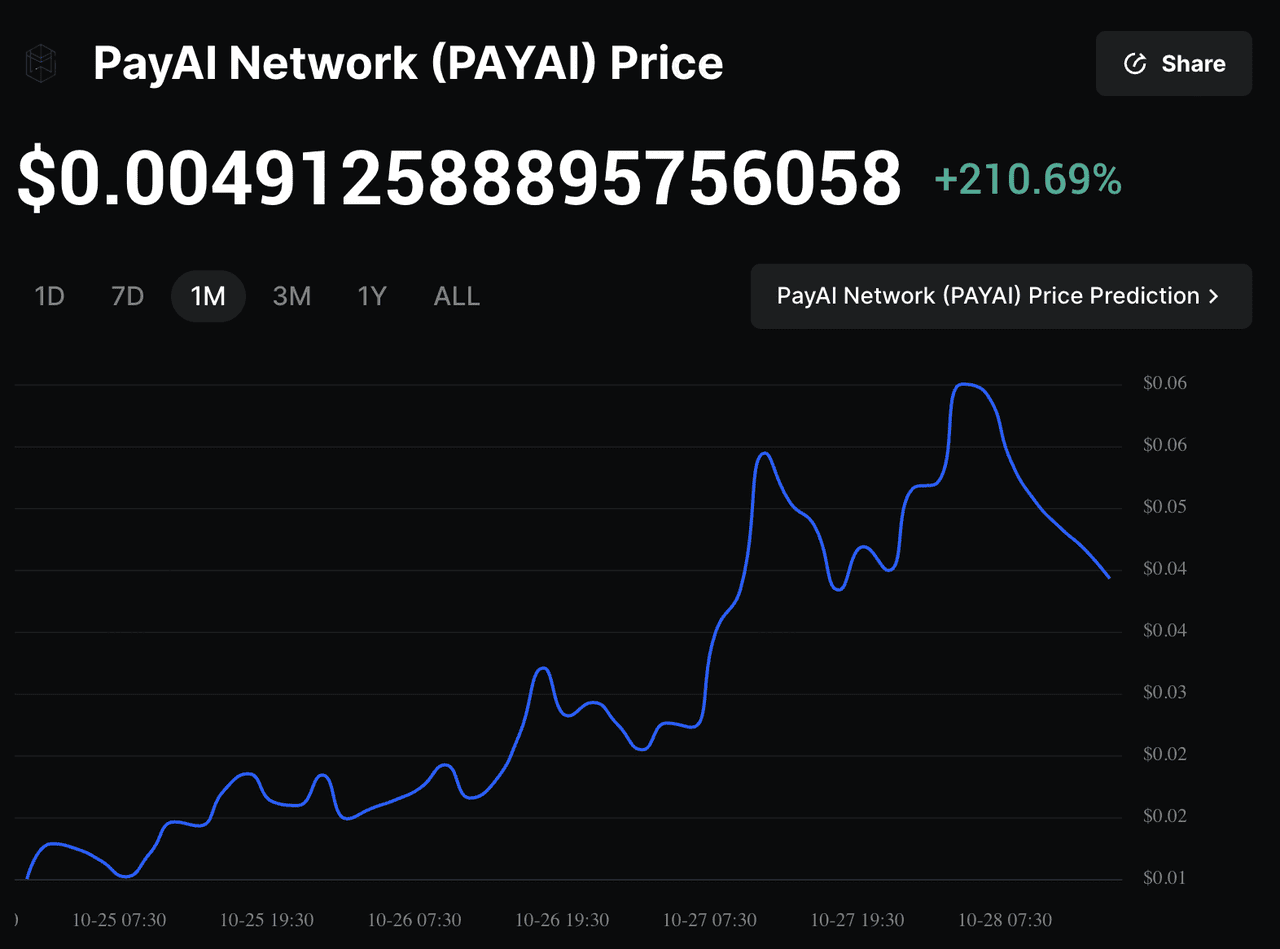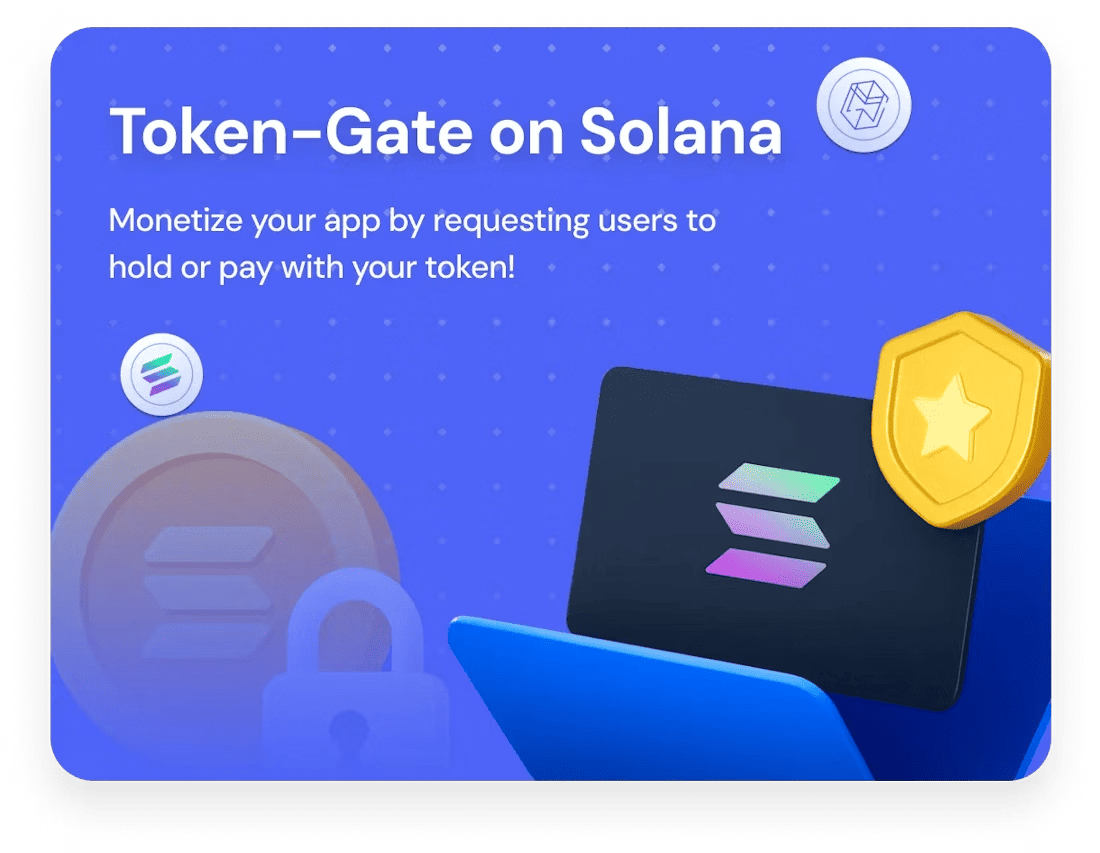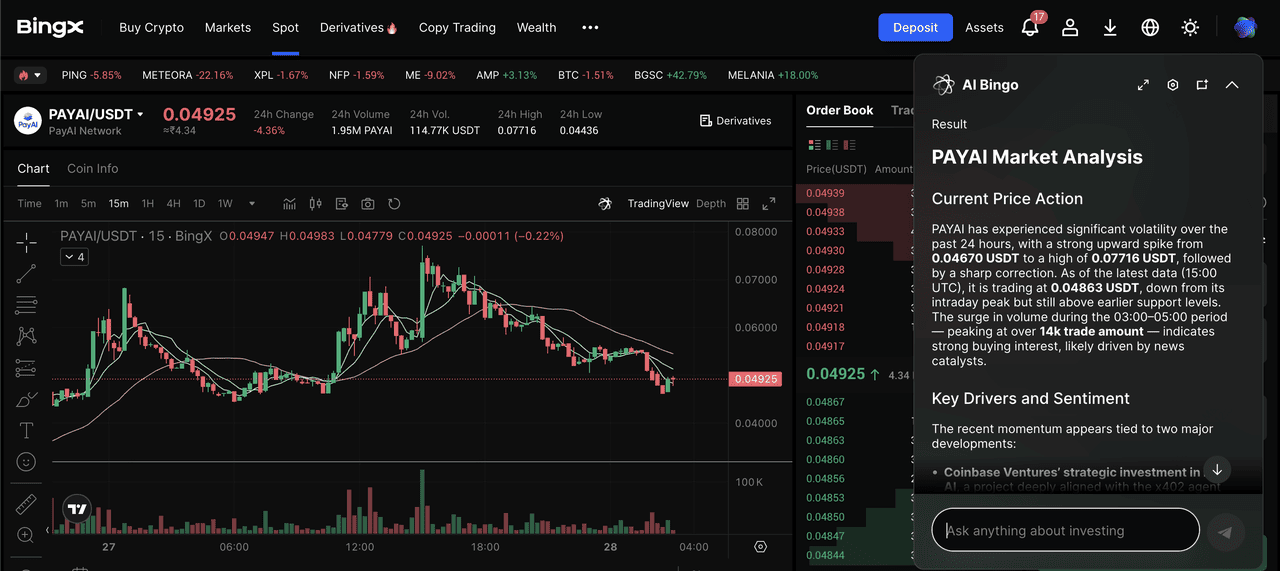Artificial intelligence is racing toward an agentic future where software talks to software, and pays for it. The missing piece has been a neutral, web-native way to charge per request, per second, or per resource without accounts, API keys, or clunky billing. Enter
x402, an open payments protocol that revives HTTP’s long-dormant “402 Payment Required” code so any client, human or AI, can pay and retry a request in one flow. Coinbase authored the protocol and, in September 2025, Cloudflare and Coinbase announced the x402 Foundation to drive adoption across the web and
AI agents.
PayAI Network (PAYAI) is a Solana-first, multi-network x402 facilitator. It verifies, routes, and settles micro-transactions for web servers and AI agents in under a second, starting with
stablecoins like
USDC and expanding across
Solana,
Base,
Polygon,
Avalanche,
IoTeX,
Sei, and more. Builders can test real flows using x402 Echo Merchant, a live demo merchant that refunds 100% of payments while PayAI covers network fees, to validate integrations at zero cost.
This guide explains how PayAI Network and x402 work together, what the PAYAI token does, supported networks, early-stage products, how to trade PAYAI on BingX, and what to watch next.
What Is x402 Protocol and How Does It Work?
An overview of x402 payment protocol | Source: PayAI Network docs
x402 is a new way for websites, apps, and AI agents to pay for digital services instantly, like a “pay-per-use” turnstile for the internet. When you request paid content or an API, the server replies with 402 Payment Required and tells you the price, token, often USDC, network, and address. Your app makes the tiny payment and retries the same request with a small proof of payment attached. A facilitator verifies it on-chain, and the server immediately returns 200 OK with the data. No accounts, no passwords, just pay and access.
This unlocks true micropayments and machine-to-machine commerce. Developers can charge a few cents per API call, per article, per compute action, or per AI tool invocation. Cloudflare and Coinbase are standardizing x402, adding batching and “pay-per-crawl” support, and Cloudflare has already shipped agent tooling that works with x402, making it easy for AI agents to pay automatically in the background.
Here's a simple overview of how x402 works:
1. A client requests a protected resource.
2. The server replies 402 Payment Required with payment requirements (amount, token, network, recipient).
3. The client sends a payment payload, e.g., EIP-3009 authorization on EVM or a partially signed Solana transaction, in a header and retries.
4. A facilitator verifies and settles on-chain.
5. The server returns 200 OK with the resource and a payment receipt header.
What Is PayAI Network (PAYAI)?
PayAI Network price chart on BingX
PayAI Network is the payment “engine room” behind x402. Instead of every developer running blockchain nodes or writing complex settlement code, PayAI provides a shared facilitator that handles verification and on-chain settlement in under a second. Developers simply point their server to
https://facilitator.payai.network and use standard endpoints like /verify, /settle, and /supported. That means even small teams can accept tiny on-chain payments, often measured in cents, for API calls, premium content, or AI-powered services, without ever touching blockchain code.
To make onboarding safer, PayAI runs x402 Echo Merchant at
https://x402.payai.network, a full test merchant that simulates the entire 402 → pay → 200 OK flow and instantly refunds every payment. This lets developers and AI agents practice real x402 payments with zero financial risk. The result is frictionless, invisible payments with no logins, API keys, or subscription systems, perfect for AI agents that need to pay per request, pay-per-crawl bots, or micropayments across multiple chains.
How PayAI Network + x402 Works
How PayAI x402 works | Source: PayAI Network docs
To help both developers and AI agents make tiny on-chain payments without friction, PayAI turns the x402 payment handshake into a simple, automated workflow.
• Server side: Developers add a small middleware layer that sets the price and accepted assets, for example: “$0.01 in USDC on Solana”. If the user/agent hasn’t paid yet, the server responds with 402 Payment Required, including all payment details: token, network, amount, destination address, and a short timeout window.
• Client/AI agent: The app reads the 402 response and automatically creates a payment payload. On EVM chains this is usually an EIP-712 signature plus EIP-3009 authorization; on Solana it’s a base64-encoded partial transaction. The client retries the request with an X-PAYMENT header containing this proof.
• PayAI facilitator: PayAI’s service receives the proof at /verify, checks signatures, balances, and timing, and then /settle broadcasts and confirms the transaction on-chain. If everything is valid, the server returns 200 OK with the requested data plus a payment receipt in X-PAYMENT-RESPONSE.
• Speed and cost: The system is tuned for sub-second settlement on fast chains like Solana, and PayAI’s Echo Merchant covers fees and auto-refunds during testing, so teams can integrate, debug, and iterate without spending real money.
What Blockchain Networks Does PayAI Network Support?
PayAI is built for multi-chain x402 payments, allowing apps and AI agents to pay across several major networks. According to its /supported endpoint, PayAI currently handles transactions on Solana (Mainnet and Devnet), Base (Mainnet and Sepolia), Avalanche (Mainnet and Fuji), Polygon (Mainnet and Amoy), Sei (Mainnet and Testnet), IoTeX, and Peaq, with support expanding as new chains are added. Developers should always check the /supported route for the latest networks and assets.
What Is PAYAI Token Utility?
$PAYAI is the native token of PayAI Network tied to facilitator economics and the wider agent economy the team is building:
• Network Incentives and Fees: Used within PayAI’s ecosystem to align participants and potentially offset/waive buyer fees, e.g., waiving a 1% buyer fee when funding escrow in the Freelance AI module.
• Ecosystem Growth: Treasury-funded liquidity and rewards to bootstrap developer adoption and merchant on-ramps.
• Agent Monetization Primitives: Upcoming modules, e.g., CT Agent Monetization and Token Gateway, aim to let creators sell bespoke agent outputs and token-gate features, settled via x402 and underpinned by PAYAI-powered incentives.
PAYAI Tokenomics
PAYAI has a fixed max supply of 1,000,000,000 tokens, with 100% of supply liquid at launch to support open trading and transparent price discovery from day one. Instead of holding a pre-minted treasury, the team purchases 20% of total supply on launch, ensuring the project has skin in the game. Half of this treasury is deployed directly into liquidity, while the other half vests linearly over 12 months to fund operations, marketing, ecosystem growth, and future community incentives. This structure keeps PAYAI fully circulating at launch while still reserving capital for long-term development and rewards.
Live and Upcoming Products in the PayAI Network Ecosystem
PayAI isn’t just a facilitator but is also building a full toolkit that lets developers and AI agents earn, charge, and automate payments in the real world.
1. x402 Echo Merchant (Live): A production-like demo merchant that walks through the entire x402 flow: request → 402 Payment Required → tiny payment → 200 OK, and then automatically refunds every transaction. Developers get real receipts, real verification, and zero financial risk while testing.
2. Freelance AI (Live): A marketplace where AI agents can sell services to each other. Sellers post offers via IPFS, buyers lock payment in Solana escrow, and once the job is delivered, payment is released automatically. Today it supports fixed-price tasks, making it easy to monetize simple AI services without humans in the loop.
3. CT Agent Monetization (Coming Soon): Social creators will be able to sell personalized AI responses or content directly to their audience, with instant crypto micropayments powered by x402, no subscriptions or third-party billing.
Key features of PayAI Network | Source: PayAI Network docs
4. Token Gateway (Coming Soon): A plug-in that lets apps and communities accept payments in their own token. Users unlock higher membership tiers, such as Basic, Pro, Platinum, based on token balances, usable across websites, dapps, and AI agents.
Key Benefits of PayAI Network for x402 Payments
Developers and AI teams choose PayAI because it turns x402 payments into a practical, production-ready system for real-world apps and autonomous agents.
1. Frictionless access: Payment itself acts as authorization, no user accounts, API keys, or subscription systems. Once the tiny transaction clears, access is granted instantly.
2. Real micropayments: Charge per-call, per-byte, or per-action using stablecoins like USDC. Perfect for AI agents that make thousands of tool or API calls without storing credit cards.
3. Multi-chain coverage: Start with Solana for sub-second settlement, then expand to Base, Polygon, Avalanche, Sei, IoTeX, and more using the same facilitator API, no new integration needed.
4. Agent-native design: Cloudflare’s Agents SDK and
Model Context Protocol (MCP) support show that autonomous agents can already detect 402 responses, pay, and retry requests automatically.
5. Free testing, real receipts: The x402 Echo Merchant refunds every payment, letting builders validate the full payment flow, 402 → pay → 200 OK, without spending a single token.
How to Trade PayAI Network (PAYAI) on BingX
BingX makes it easy to trade PAYAI with built-in
BingX AI, which highlights trends, momentum signals, support/resistance zones, and market alerts to help you time entries and exits more confidently.
How to Buy and Sell PAYAI on BingX Spot
PAYAI/USDT trading pair on the spot market powered by BingX AI insights
2. Analyze with BingX AI: On the trading page, click the AI icon on the top-right corner to view real-time price signals, volume strength, and potential breakout levels.
3. Place your order:
• Use Limit Orders to buy dips or take profit at set price levels
4. Risk management: Set price alerts, track volatility, and size positions appropriately if the market moves quickly.
Going Long or Short on PAYAI on BingX Futures
PAYAI/USDT perpetual contract on the futures market powered by AI BingX
2. Check BingX AI for
funding rates, long/short ratios, and volatility signals.
3. Choose your leverage and place Long (betting price will rise) or Short (betting price will fall) positions.
With both Spot and Futures available, BingX lets you build long-term positions or trade short-term price swings, all supported by BingX AI for smarter, data-backed decisions.
Risks and Key Considerations Before Investing in PAYAI
Like any emerging Web3 project, PayAI comes with opportunities, but also risks that investors should understand before committing capital.
• x402 is still early: The 402 standard is moving quickly, with new proposals such as deferred or batched payments still being tested. As the spec evolves, merchants and agents may need to update tooling, wallets, or settlement flows. Early adopters benefit from first-mover advantage, but they also face more technical change.
• Multi-chain complexity: PayAI operates across Solana, Base, Polygon, Avalanche, and other networks, each with different fees, speeds, and settlement guarantees. Developers should always check the /supported endpoint, and users should expect higher volatility and occasional routing issues in cross-chain environments.
• Token uncertainty: PAYAI’s utility, revenue share, and future integrations are still evolving. While the token has fixed supply and known treasury mechanics, long-term value will depend on real merchant adoption, agent-to-agent payment volume, and ecosystem growth. Always review the official documentation, market data, and disclosures before investing.
Conclusion: What’s Next for PayAI Network?
PayAI is positioning itself as a key payment layer for x402, giving developers and AI agents a simple way to handle pay-per-use access across multiple blockchains. With the Echo Merchant live, agent-to-agent Freelance AI in production, and upcoming tools like CT Agent Monetization and the Token Gateway, the project is moving toward a broader ecosystem where AI services can buy, sell, and settle value in real time.
The next phase will depend on adoption, including how many merchants integrate x402, how widely agents embrace pay-per-call models, and whether cross-chain settlement remains fast and reliable at scale. If these pieces click, PayAI could become a foundational bridge between the web and autonomous AI commerce. Still, it remains an early-stage initiative in a fast-changing sector, and results are not guaranteed. Users and investors should follow updates closely, test infrastructure carefully, and manage risk with the same caution they apply to any emerging crypto technology.
Related Reading
FAQs on PayAI Network (PAYAI)
1. What problem does PayAI Network solve?
PayAI removes the need for developers to run blockchain nodes or build custom settlement code. Your server only speaks normal HTTP, while PayAI verifies, settles, and receipts every x402 payment automatically.
2. Which chains does PayAI support right now?
PayAI currently works across Solana, Base, Polygon, Avalanche, Sei, IoTeX, and Peaq on both mainnets and testnets. The exact list may change, so developers should always check the /supported endpoint for the latest networks and assets.
3. What is the PAYAI token used for?
The PAYAI token powers facilitator economics, liquidity, rewards, and fee discounts in PayAI modules like Freelance AI. Treasury acquisition and vesting policies are detailed in the official tokenomics documentation.
4. Is there a way to test x402 transactions on PayAI Network without spending?
Yes. The x402 Echo Merchant runs real x402 transactions and instantly refunds 100% of payments, while PayAI also covers network fees so developers can test production flows at zero cost.
5. How is x402 protocol evolving?
The standard is being advanced by the x402 Foundation, co-founded by Cloudflare and Coinbase, with active proposals like deferred or batched payments for crawlers, subscriptions, and bulk usage.







